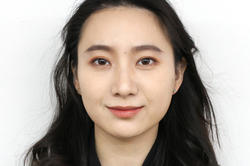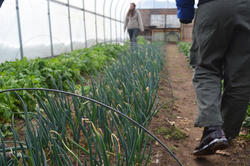New grad Fengijao Ge presents an innovative project at this year’s Antenna conference that repurposes textiles waste to combat erosion.
The Regenerative Earth Collective
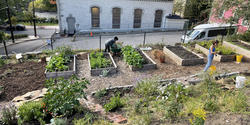
Students in a recently revamped gardening club called the RISD Regenerative Earth Collective (RREC) are using a small plot of land on Defoe Place, behind the Congdon Street Baptist Church, to build community and get hands-in-the-dirt experience in regenerative land use, sustainably sourced materials and environmentally responsible creative practice. “We think of ourselves as a living extension of the Nature Lab where you can observe local species in the context of their natural environment,” says club co-leader Cristiane Caro 21 FD/MA 22. “Understanding where things come from allows you to reimagine how best to utilize them.”
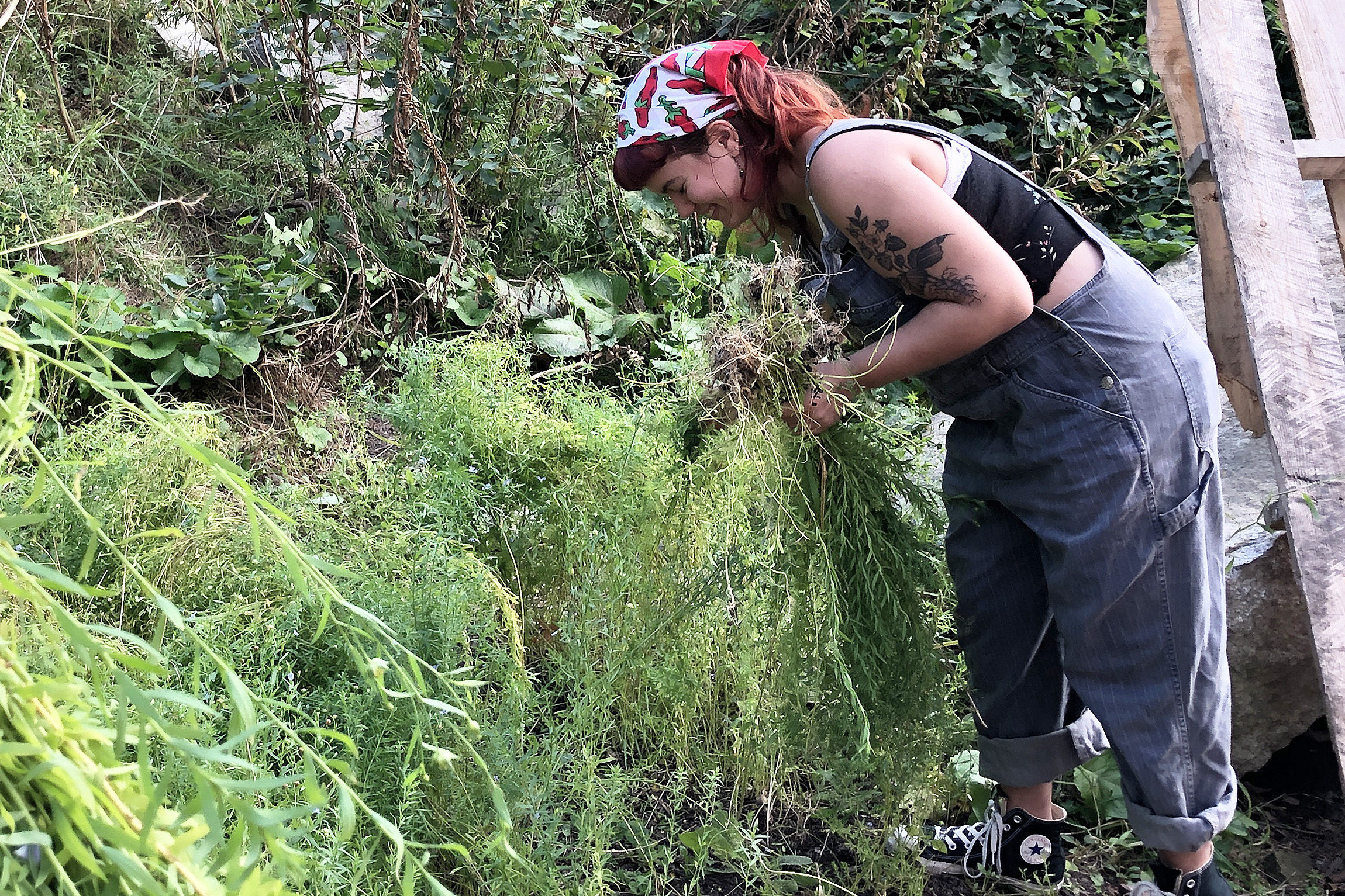
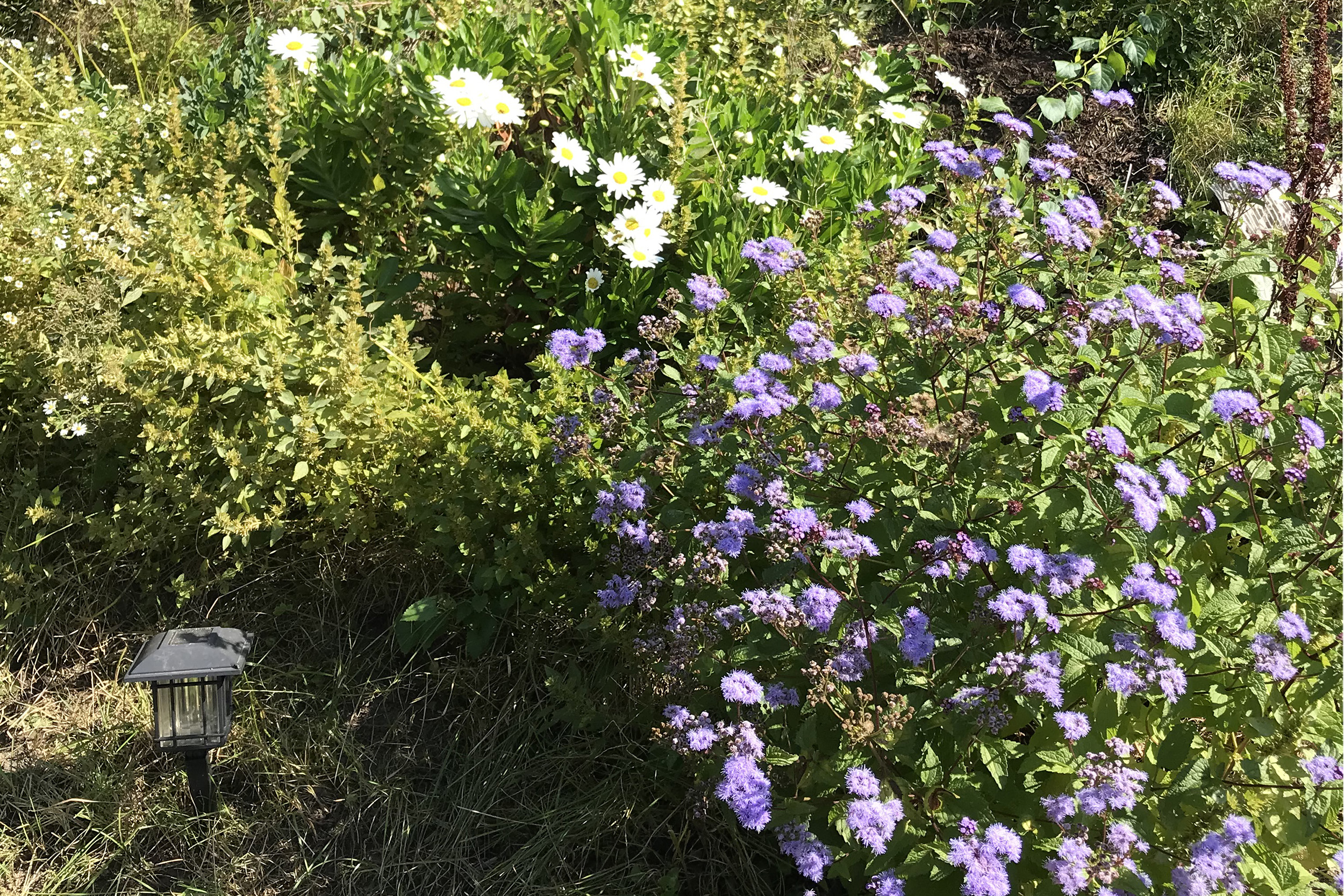
With support from the Center for Student Involvement and faculty advisors Elizabeth Hermann, Laura Briggs BArch 82, Adam E. Anderson MLA 12 and Hope Leeson, the RREC is growing organic produce as well as flowers that can be turned into natural dyes and fibers that can be spun into textiles. Senior Chelsea Dai 22 ID, who had no gardening experience when she joined as a first-year student, says that “The Plot” helps her to comprehend the usually invisible systems we all rely on.
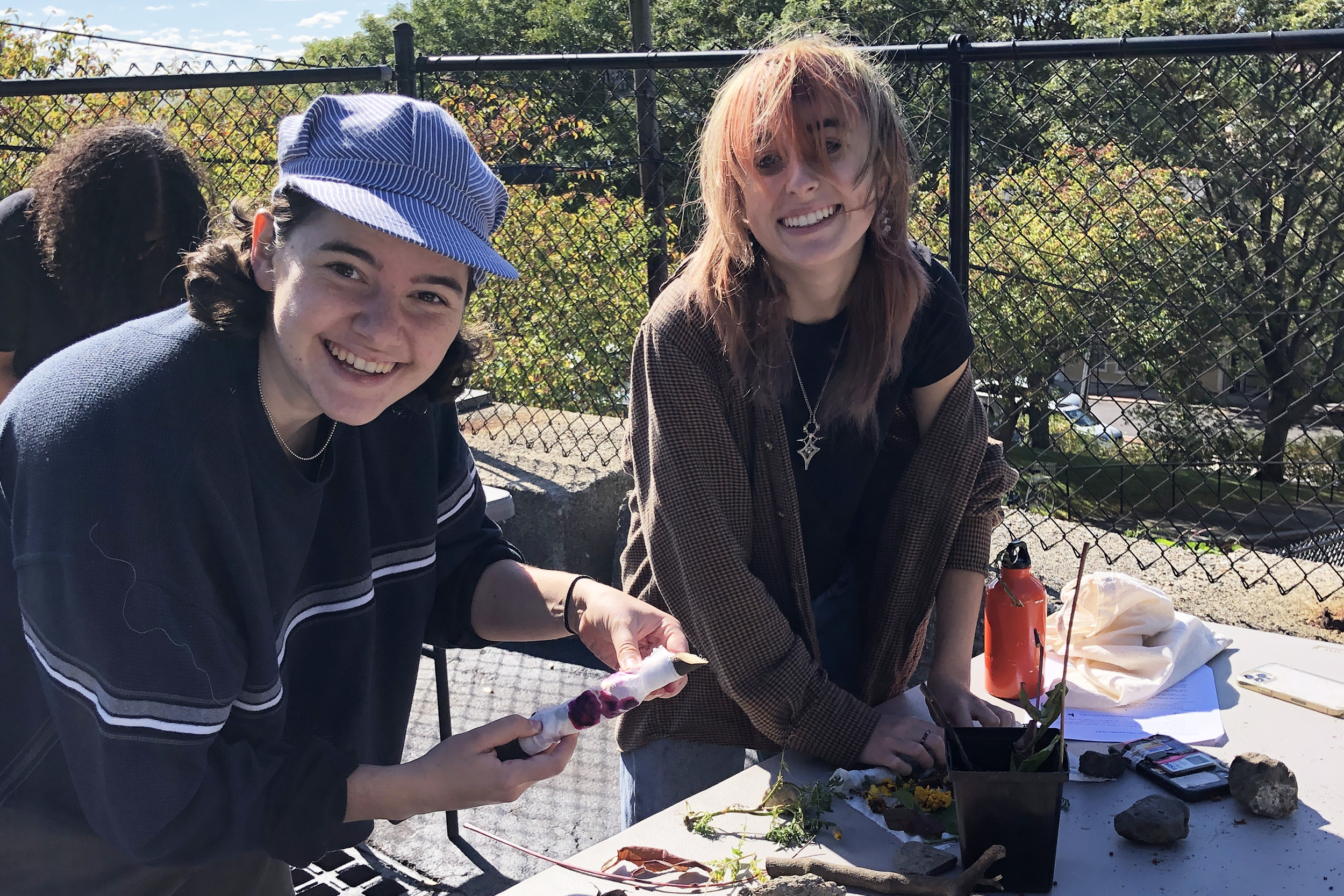
“We have a responsibility to think about how our work as designers impacts everything it touches,” Dai explains. “When we talk about environmental sustainability, it’s such a high-level term that it’s easy to say ‘I’m just going to use recycled paper.’ But it can go a lot deeper in terms of the whole design process.”
“We have a responsibility to think about how our work as designers impacts everything it touches.”
Junior Clara Boberg 23 TX, who just got involved this summer, developed a dye and fiber garden within The Plot and has been leading workshops on natural dye-making and how to process flax to make linen.
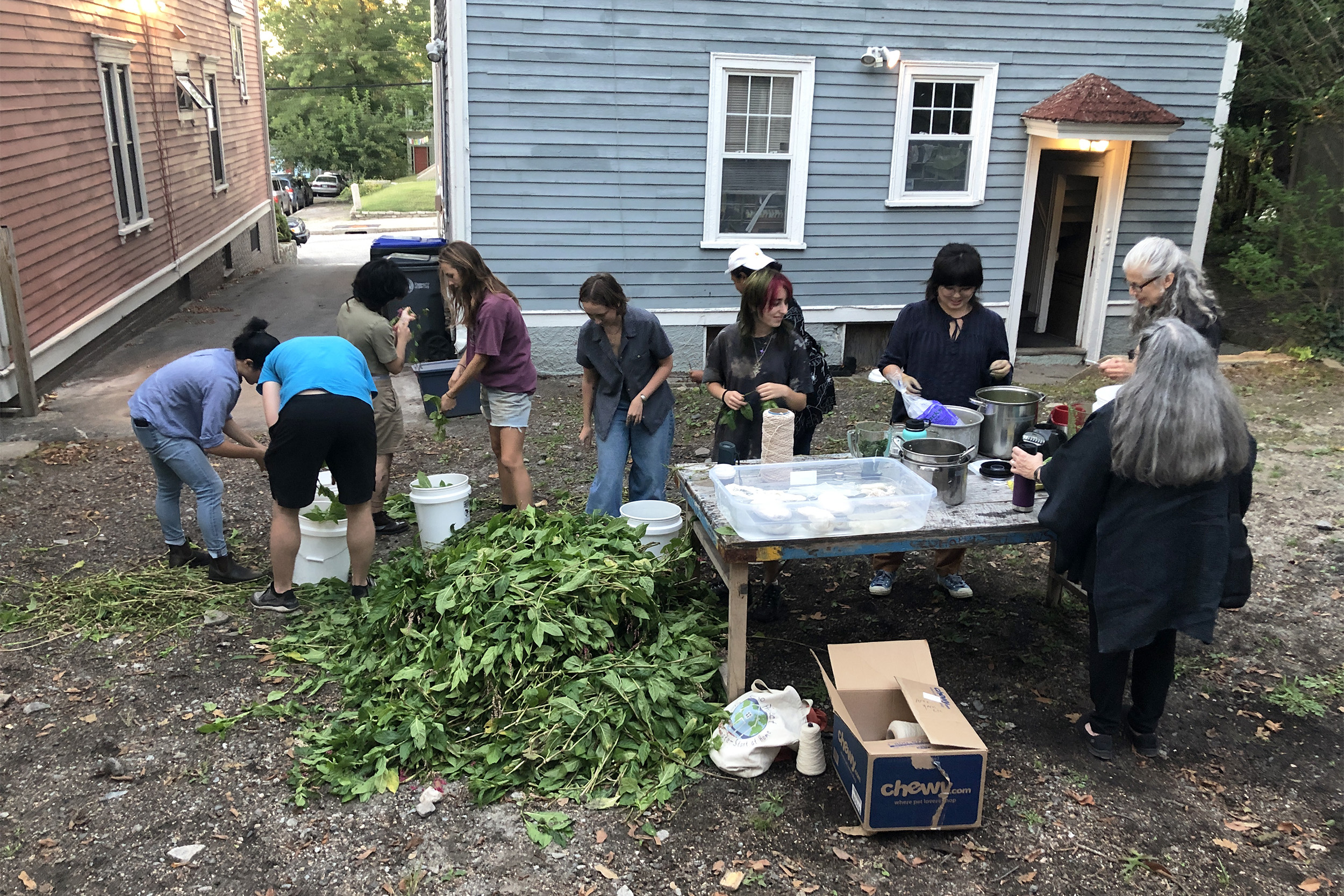
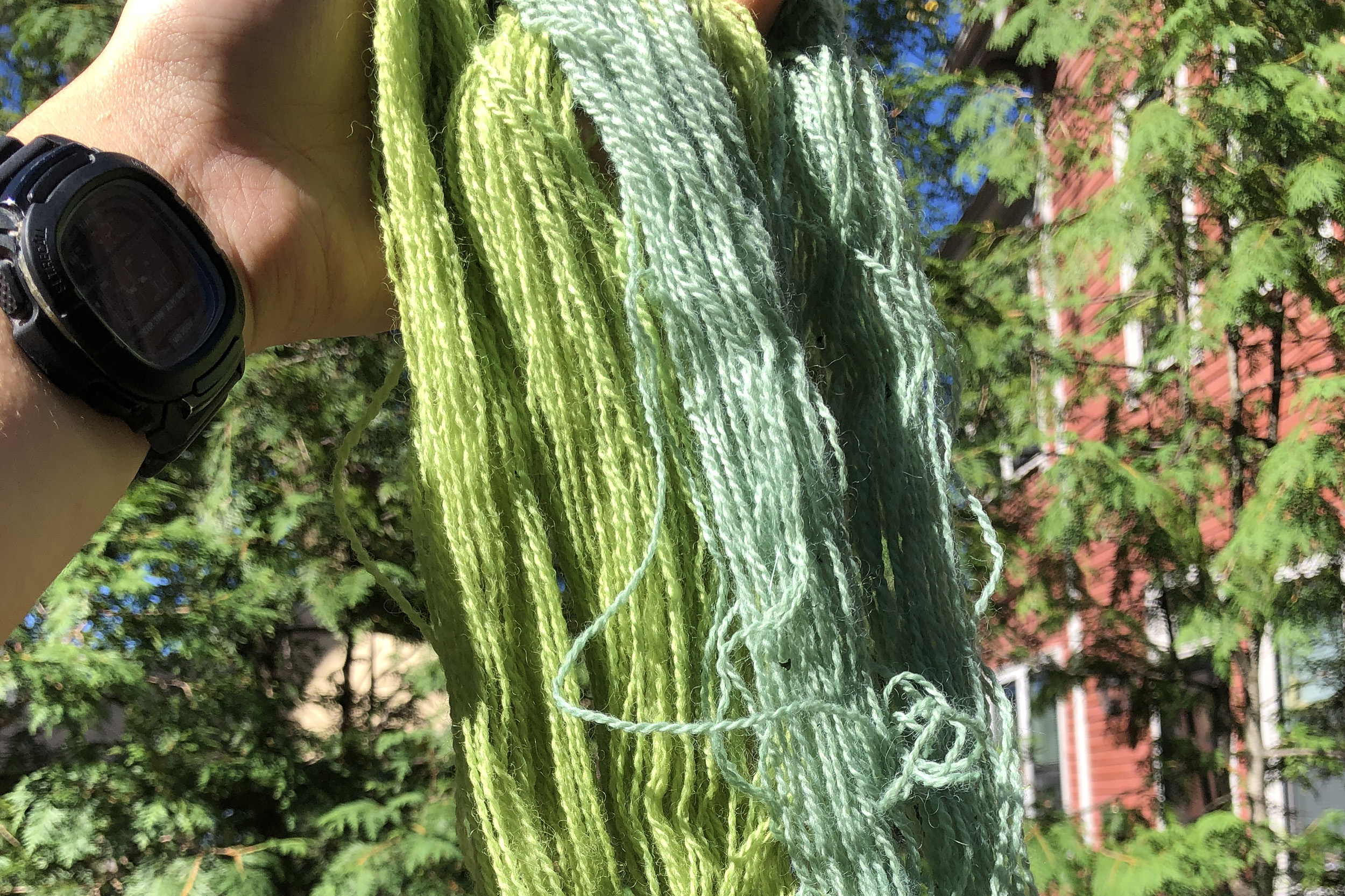
“Natural dyes are hard to work with and you have to grow a lot of plants,” Boberg says, “but it’s a way for people to think about the options they have. Our main fiber crop this year was flax, which is really sustainable, can be grown locally and requires fewer pesticides and a lot less water than growing cotton.”
“Our main fiber crop this year was flax, which is really sustainable, can be grown locally and requires fewer pesticides and a lot less water than growing cotton.”
As Boberg explains, the process involves growing the stalks close together so they don’t branch out, harvesting them and then fermenting them in water to separate out the fibrous material that goes into linen. A series of hand tools are used to chop up the fiber before it’s pulled through a comb. “Then you get these long, shiny, strong fibers that you can spin into linen, which is really cool,” they add.
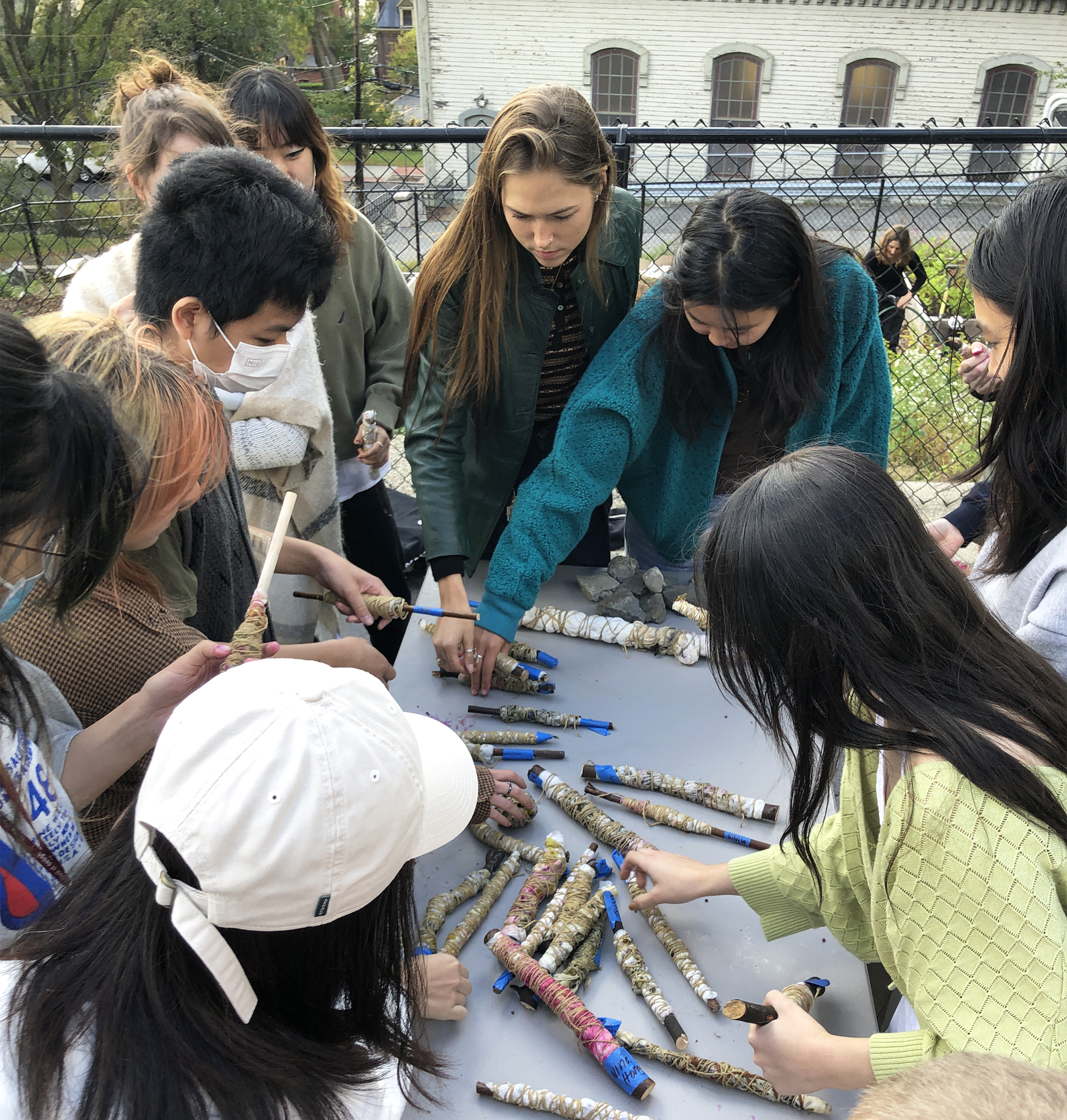
Caro is currently working on creating the tools needed out of wood from Leeson’s barn. “Using our design techniques to make this workshop happen is like coming full circle,” she says. “The relationship between my own creative process and the earth is still pretty abstract in my head. I wasn’t raised with that connection.”
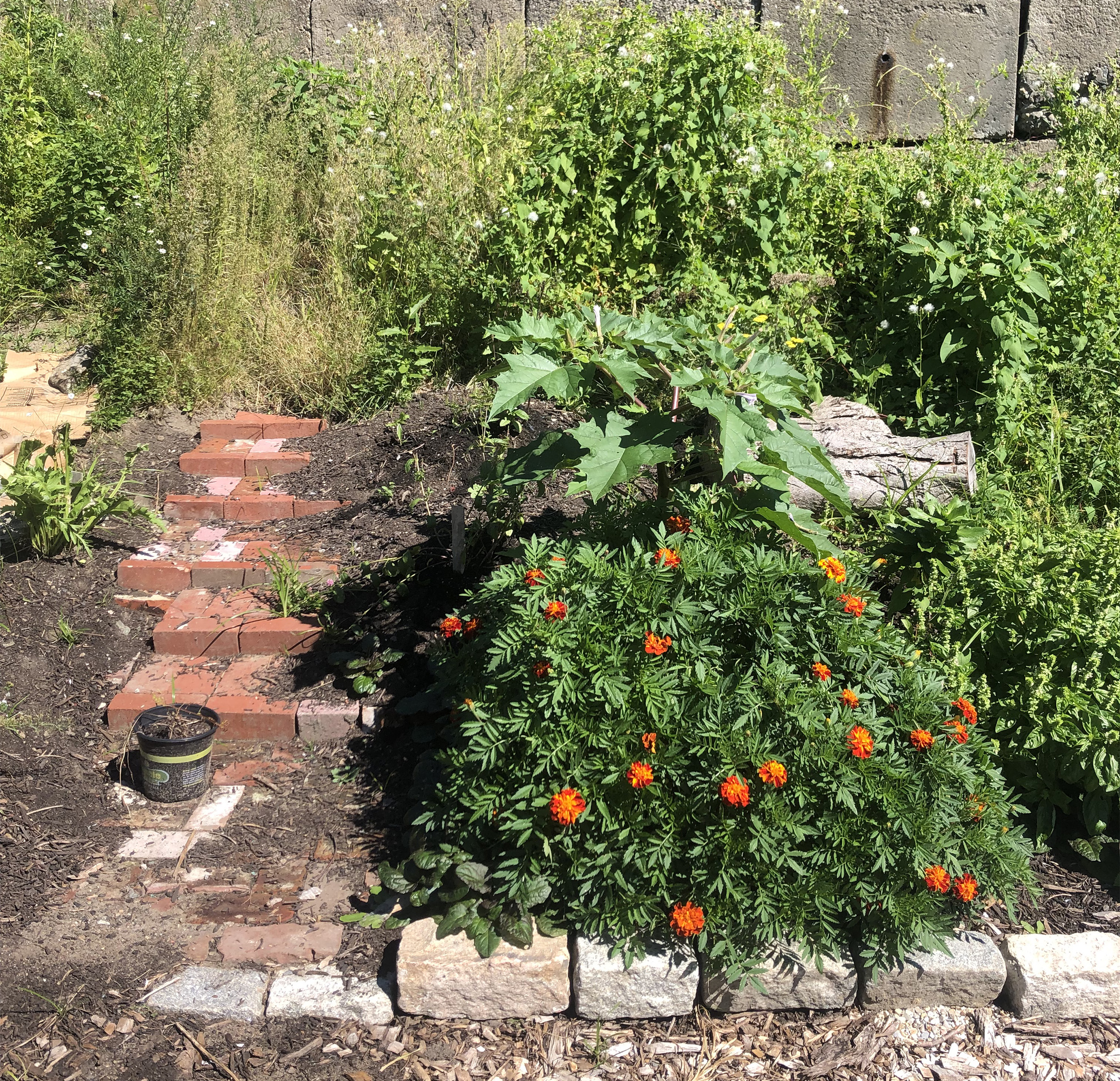
Sophomore Santiago Alvarado 24 ID did do some gardening with his mom as a kid but sees the RREC as an incredible learning experience and a great way to connect with the earth. “It’s important for designers to get that kind of immersion rather than thinking about sustainability as just a theory,” he says. “We’re part of this ecosystem, too.”
—Simone Solondz / photos courtesy RREC
The RREC meets on Sundays from 11 am–2 pm. Learn more by emailing regenerativeearth@risd.edu.
October 25, 2021
